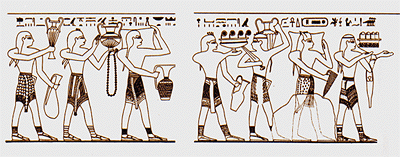Part Two:
Crete aligned with Egypt
“The wealth of pottery, sculpture and jewellery that has been found in Crete was
so old that no one could accurately date it, according to Professor [Stylianos] Alexiou.
So many Minoan artefacts are in Egypt that experts are best able to date Cretan finds
by comparing them to Egyptian ones, whose chronology is better understood”.
Gavin Menzies
Gavin Menzies (The Lost Empire of Atlantis: History's Greatest Mystery Revealed (HarperCollins, 2011), writing of the “highly prized”, distinctive Cretan pottery (pp. 41-44), will tell of how Egyptian chronology is the yardstick for dating Cretan pottery:
The pottery told us loud and clearly that the Minoans [sic] had traded much more than foodstuffs and olive oil. The Kamares designs are dramatic, a modern-looking black and red, and the pottery was first excavated here [Kamares cave] in the early 1900’s.
I’d learned by now it had been highly prized across the entire Mediterranean. It has been found across the Levant and Mesopotamia, from Hazor and Ashkelon in Israel to Beirut and Byblos in Lebanon and the ancient Canaanite city of Ugarit, near what is now the sea-town of Ras-Shamra in modern-day Syria. Judging by the finds in Egyptian tombs and elsewhere across the region, the Minoan skill in art seems to have given the Minoans of ancient Crete a free pass to the glamour, science and civilisation of the two most advanced cultures of the Early Bronze Age, Mesopotamia and Egypt.
In the 14th century B.C., said Professor [Stylianos] Alexiou, the bounty of Crete – its skilled metal-work, olive oil, pottery, saffron and so on – was exchanged as gifts between Mediterranean rulers. In return, the Egyptians sent exotica: gold, ivory, cloth and stone vessels containing perfumes.
The wealth of pottery, sculpture and jewellery that has been found in Crete was so old that no one could accurately date it, according to Professor Alexiou. So many Minoan artefacts are in Egypt that experts are best able to date Cretan finds by comparing them to Egyptian ones, whose chronology is better understood.
Damien Mackey’s comment: Whilst the following quote from professor Alexiou will show how the successive palatial periods of Cretan history are to be aligned with Egypt, on the basis of pottery finds, the problem is that Egyptian dynastic history itself has not been properly dated, meaning that, for instance, Cretan pottery synchronous with the era of pharaoh Thutmose [Thutmosis] III of 18th dynasty Egypt, i.e., Neo-Palatial Cretan, will be dated about 500 years earlier than it should be.
According to Professor [Stylianos] Alexiou:
The absolute date in years of the various Minoan periods is based on synchronisms with ancient Egypt, where the chronology is adequately known [sic] thanks to the survival of inscriptions. Thus the [Cretan] Proto Palatial Period [2000-1700 BC] is thought to be roughly contemporary with the [Egyptian] XIIth dynasty [1991-1783 BC] because fragments of [Cretan] Kamares pottery attributed to Middle Minoan II [c. 1800 BC] have been found at Kahun in Egypt in the habitation refuses of a settlement found in the occasion of the erection of the royal pyramids of this [XIIth: 1991-1783 BC] dynasty. One Kamares vase was also found in a contemporary tomb at Abydos [Egypt - Valley of the Kings]. The beginning of the Neo Palatial period [Crete -1700 BC] must coincide with the Hyksos epoch [1640-1550] since the lid of a stone vessel bearing the cartouche of the Hyksos Pharaoh Khyan was discovered in Middle Minoan III [c. 1700-1600 BC] levels at Knossos [Crete]. Equally the subsequent Neo-Palatial Cretan period [1700-1400 BC] falls within the chronological limits of the new kingdom with particular reference to the Egyptian] XVIIIth dynasty [1550-1307 BC]: an alabaster amphora with the cartouche of Tuthmosis III [1479-1425 BC] was found in the final palatial period at Katsaba [Crete]. ….


No comments:
Post a Comment